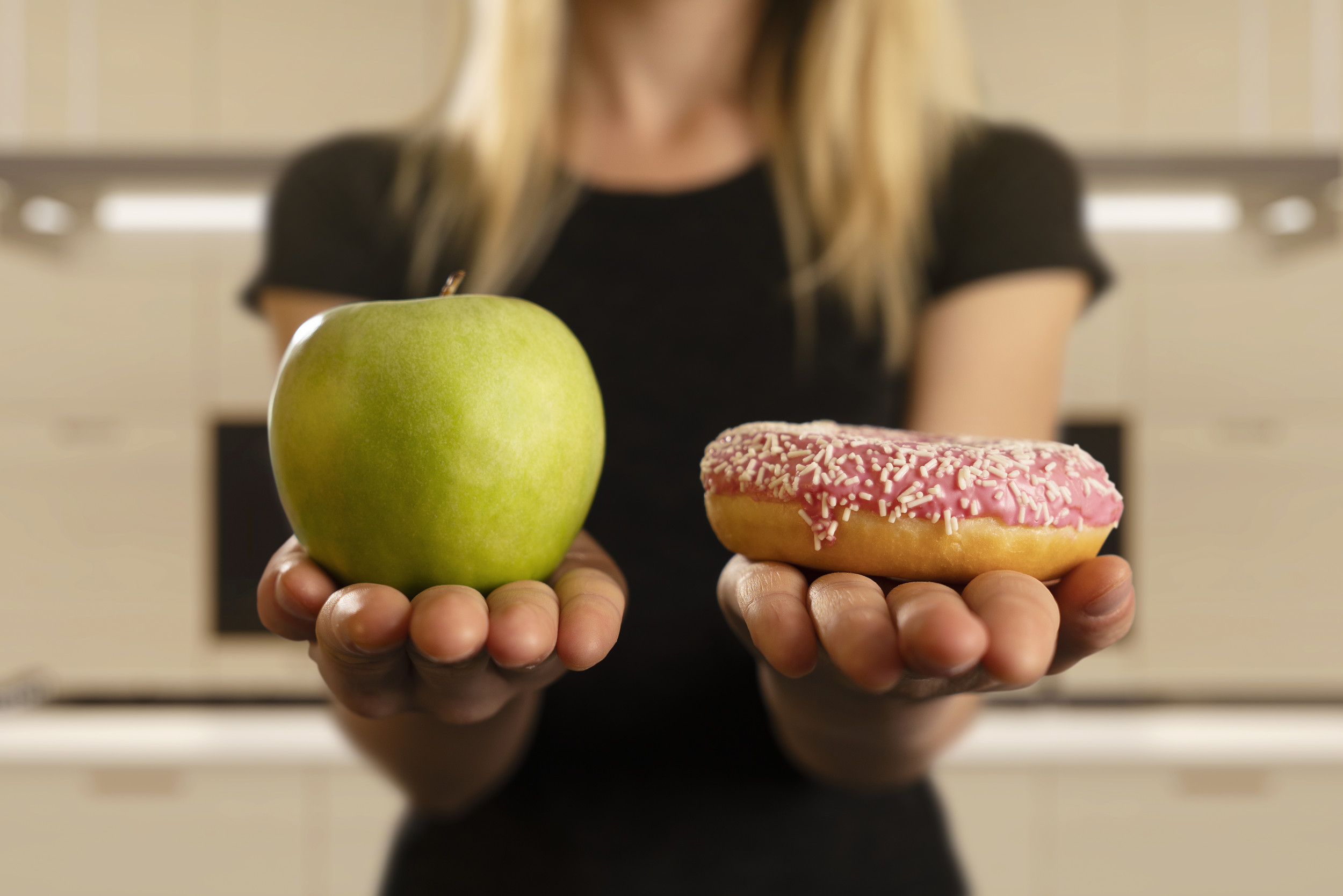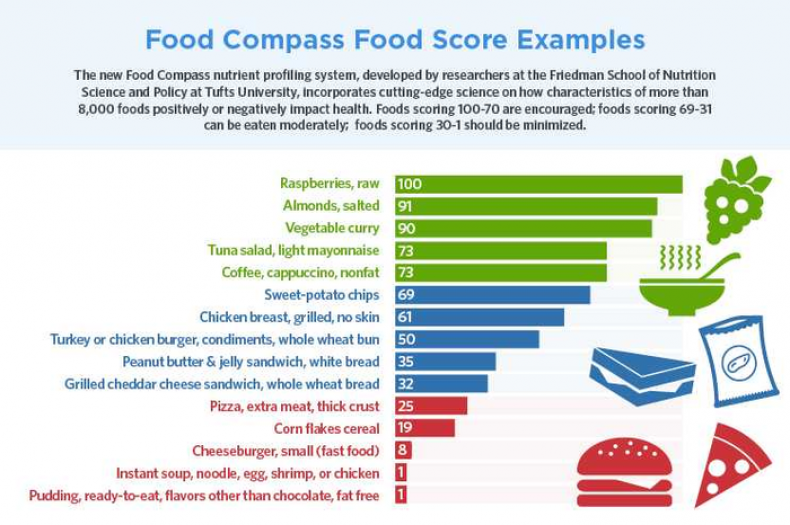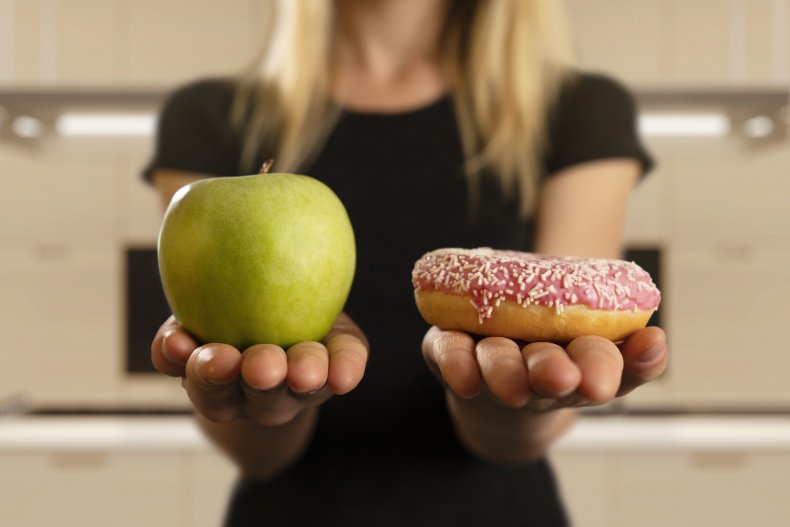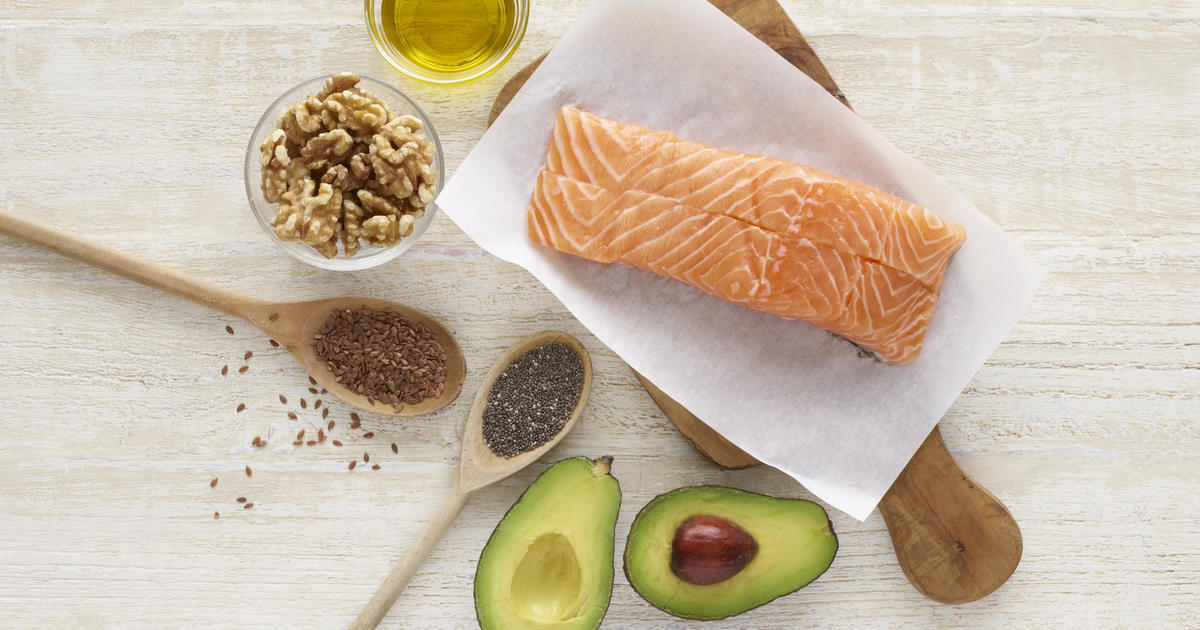
Chris Stapleton takes home six CMA Awards
Chris Stapleton had a strong night at the Country Music Awards on Wednesday, winning six awards including song and album of the year.
OsmithMedia Nashville Wannabe Stars Too Team!

By OsmithMedia
Chris Stapleton poses with his CMA awards on Wednesday night in Nashville.
Chris Stapleton had a strong night at the Country Music Awards on Wednesday, winning six awards including song and album of the year.
OsmithMedia Nashville Wannabe Stars Too Team!


4 Minute Church is so appreciative of all the news features that added to the quality of our lives.
 Oscar Smith, Author and Host 4 Minute Church
Oscar Smith, Author and Host 4 Minute Church
anchor.fm/s/27337a08/podcast/rss
Researchers have developed a new tool that helps consumers choose healthy products, as well as helping food companies and restaurants produce healthier foods.
Food Compass profiles the nutrients using cutting-edge science to chart different characteristics that could positively or negatively impact health. The tool was developed over a period of three years by a team from Friedman School of Nutrition Science and Policy at Tufts University, Massachusetts.
The system ranked sweets and desserts, sweetened sodas, and energy drinks as products that should be consumed only minimally. With raw fruits, other fruits, and vegetables raking highest in the Food Compass scoring.

"Once you get beyond 'eat your veggies, avoid soda,' the public is pretty confused about how to identify healthier choices in the grocery store, cafeteria, and restaurant," dean of the Friedman School, Dariush Mozaffarian, said. "Consumers, policymakers, and even industry are looking for simple tools to guide everyone toward healthier choices."
Mozaffarian is the author of a study published in Nature Foods that details how the nutrient profiling system (NPS) The Food Compass aims to discriminate the healthfulness of foods for front-of-package labeling, warning labels, taxation, company ratings, and more.
"Existing NPS often assess relatively few nutrients and ingredients, use inconsistent criteria across food categories, and have not incorporated the newest science," the authors said in the study. "Here, we developed and validated an NPS, the Food Compass, to incorporate a broader range of food characteristics, attributes, and uniform scoring principles."
The authors say that Food Compass scores 54 attributes across nine health-relevant domains: nutrient ratios, vitamins, minerals, food ingredients, additives, processing, specific lipids, fiber and protein, and phytochemicals.
These scores are then collected and ranked with a final Food Compass Score ranging from 1, the least healthy, to 100 the most healthy, that covers all foods and beverages.
A score of 70 and more indicates food that should be encouraged for consumption, a score of 69 to 31 means a food should be consumed in moderation. While a score of 30 or lower indicates a foodstuff or beverage that should be consumed only minimally.
The average score obtained by the Food Compass was 43.2, with sweets and desserts scoring lowest with an average score of around 16. The highest scoring items were vegetables and fruits, scoring between 69 and 74.
Sugar-sweetened sodas and energy drinks ranked around 28 on the Food Compass. Fruit juices that were 100 percent fruit and vegetable scored around 67.
In terms of proteins, beef scored around 25, chicken and other poultry around 43, and seafood 67.
The team tested Food Compass with a U.S. database of over 8,000 food items and also assessed items based upon nutritional attributes linked to chronic diseases like obesity, cardiovascular problems, diabetes, and cancer.
Additionally, the Food Compass also considers risks of undernutrition, especially for mothers, young children, and the elderly.
The Food Compass is designed in such a way that the scoring of food items can evolve over time, based upon future evidence provided from research areas like gastrointestinal health, immune function, brain health, bone health, and physical and mental performance. The system should also be able to factor in wider aspects of food production, such as the need for sustainability.
The team hopes that as well as helping consumers make informed choices, the Food Compass could also help the food industry develop healthier products, as well as improving food labeling and informing agricultural policy.
"With its publicly available scoring algorithm, Food Compass can provide a nuanced approach to promoting healthy food choices–helping guide consumer behavior, nutrition policy, scientific research, food industry practices, and socially based investment decisions," said author and University of Thessaly researcher, Renata Micha, who was a faculty member at the Friedman School when the Food Compass was being developed.

tt Marsha W. Smith, Healthy Lady
Marsha W. Smith, Healthy Lady
Researchers have developed a new tool that helps consumers choose healthy products, as well as helping food companies and restaurants produce healthier foods.
Food Compass profiles the nutrients using cutting-edge science to chart different characteristics that could positively or negatively impact health. The tool was developed over a period of three years by a team from Friedman School of Nutrition Science and Policy at Tufts University, Massachusetts.
The system ranked sweets and desserts, sweetened sodas, and energy drinks as products that should be consumed only minimally. With raw fruits, other fruits, and vegetables raking highest in the Food Compass scoring.

"Once you get beyond 'eat your veggies, avoid soda,' the public is pretty confused about how to identify healthier choices in the grocery store, cafeteria, and restaurant," dean of the Friedman School, Dariush Mozaffarian, said. "Consumers, policymakers, and even industry are looking for simple tools to guide everyone toward healthier choices."
Mozaffarian is the author of a study published in Nature Foods that details how the nutrient profiling system (NPS) The Food Compass aims to discriminate the healthfulness of foods for front-of-package labeling, warning labels, taxation, company ratings, and more.
"Existing NPS often assess relatively few nutrients and ingredients, use inconsistent criteria across food categories, and have not incorporated the newest science," the authors said in the study. "Here, we developed and validated an NPS, the Food Compass, to incorporate a broader range of food characteristics, attributes, and uniform scoring principles."
The authors say that Food Compass scores 54 attributes across nine health-relevant domains: nutrient ratios, vitamins, minerals, food ingredients, additives, processing, specific lipids, fiber and protein, and phytochemicals.
These scores are then collected and ranked with a final Food Compass Score ranging from 1, the least healthy, to 100 the most healthy, that covers all foods and beverages.
A score of 70 and more indicates food that should be encouraged for consumption, a score of 69 to 31 means a food should be consumed in moderation. While a score of 30 or lower indicates a foodstuff or beverage that should be consumed only minimally.
The average score obtained by the Food Compass was 43.2, with sweets and desserts scoring lowest with an average score of around 16. The highest scoring items were vegetables and fruits, scoring between 69 and 74.
Sugar-sweetened sodas and energy drinks ranked around 28 on the Food Compass. Fruit juices that were 100 percent fruit and vegetable scored around 67.
In terms of proteins, beef scored around 25, chicken and other poultry around 43, and seafood 67.
The team tested Food Compass with a U.S. database of over 8,000 food items and also assessed items based upon nutritional attributes linked to chronic diseases like obesity, cardiovascular problems, diabetes, and cancer.
Additionally, the Food Compass also considers risks of undernutrition, especially for mothers, young children, and the elderly.
The Food Compass is designed in such a way that the scoring of food items can evolve over time, based upon future evidence provided from research areas like gastrointestinal health, immune function, brain health, bone health, and physical and mental performance. The system should also be able to factor in wider aspects of food production, such as the need for sustainability.
The team hopes that as well as helping consumers make informed choices, the Food Compass could also help the food industry develop healthier products, as well as improving food labeling and informing agricultural policy.
"With its publicly available scoring algorithm, Food Compass can provide a nuanced approach to promoting healthy food choices–helping guide consumer behavior, nutrition policy, scientific research, food industry practices, and socially based investment decisions," said author and University of Thessaly researcher, Renata Micha, who was a faculty member at the Friedman School when the Food Compass was being developed.



New Horizons ChurchNew Horizon Church Pastor Mark Jordan
Freelance reporter Gessika Thomas says nobody is safe from kidnapping in Haiti, as gangs feel they have more power and freedom in the country.
Thousands of workers went on strike on Monday, angry about the country's lack of security, following the abduction of 17 members of a U.S.-based missionary group, including one Canadian citizen.
American officials including the FBI were working with Haitian authorities to try to secure the release of the 12 adults and five children connected with the Ohio-based Christian Aid Ministries who disappeared Saturday while on a trip to visit an orphanage.
And Thomas, who lives in Port-au-Prince, says the violence doesn't just affect people from abroad. She said her friend was once kidnapped, and that his family was forced to pay ransom twice before he was released. She worries about going outside herself, too.
She spoke with Matt Galloway on The Current. Here is part of that conversation.
How tense is the situation? Can you feel that in the streets right now?
It is tense because over the last two or three years, what happened is that the kidnapping has been growing and the state is powerless.
It's a situation where, during the last two months since the president has died, during the last two or three months, it has been growing back, constantly.

Before you would have certain areas where you know, okay, you just don't go there. But now nobody is safe. It can happen anywhere and it can happen to anybody.
I was going to say, who is usually targeted? But [you're now suggesting] that anybody could be targeted.
Before you would have businessmen, people who are well known who have money, who were loaded, who could be targeted, or politicians, stuff like that.
But now it's totally different because ... the gangs, they feel more powerful now. It's about money, really, because most of the times when they kidnap the people, they don't kill them, they release them. They would hold them for a month. They would keep on asking for money.
Their purpose really is to monetize the value of the person for their family, which is heartless.
You had a friend who was kidnapped.
Yes, I had a friend. It was really difficult. He was kidnapped in his house. They went in, [got] him in his house.
He spent nearly a month captive, and his family paid twice. They paid a first ransom and they called him on the Saturday to say that they were going to release him and they never did. The family thought he was dead.
The next Wednesday, they called again and they asked for more money, saying that the money wasn't enough for them [the kidnappers] to share. The family and friends had to put together [more money] in order to help them pay.
That friend is still living here in Haiti because sometimes people don't have the choice; they cannot leave. They don't have the means because there is that economical death. After you finish to pay that kind of money, you would sell house, cars.

How do you think what he went through changed him as a human being?
Well, he was really affected. What happens when you get through this kind of experience, it changes you in a way that it makes you see life differently.
You either go where you feel that nothing has any value anymore, you're just living or you just know that you can die any time. Or you just say, OK, I went through that, and I'm sure that I'm going to grow more powerful. I'm going to grow, my personality is going to be stronger.
What does that mean for people's daily lives when they go out?
When you step out the door, that means you don't know if you're going to come back. Because you might not be attacked by a gang directly, but if you are in an area, [and if] there is a fight, so you might be a victim of that.
When you step out of your house, you don't have the choice, you know, you have to go out.
Are you worried about your own safety?
Yes, I am, like everybody else. But this is where you're living. It's a risk.
Written by Philip Drost. Produced by Rachel Levy-McLaughlin, Paul MacInnis, and Ben Jamieson. Q&A edited for length and clarity.


 Susan Landau and Koichi Mizushim (Credit: GUY YECHIELI)
Susan Landau and Koichi Mizushim (Credit: GUY YECHIELI) Rami and Yael Ungar (Credit: GUY YECHIELI)
Rami and Yael Ungar (Credit: GUY YECHIELI)

Ahead of Apple’s Unleased event premiering this Monday, an analyst made a surprising prediction: that the two M1X- powered 14-inch and 16-inch MacBook Pro models expected to be announced will motivate almost a third of current MacBook Pro owners to open their wallets and splurge on the upgrade.
“The proprietary M1X processor is the foundational part of this MacBook and ultimately we believe will be a game changer that will convert 30%+ of current MacBook users to upgrade over the next year catalyzing growth on this hardware segment,” according to Wedbush analyst Daniel Ives.
And though there’s no confirmation on the third generation of AirPods, Ives is confident that they will be making an appearance at the event as well. He states that, according to his supply chain checks, AirPods 3 have already been manufactured and are awaiting a global shipment.
News of the MacBook Pro 14-inch and 16-inch have been circulating for some time now. Though the 16-inch version didn’t premiere during the WWDC 2021 event as previously hoped, both are expected to show up for the Apple event on Monday, October 18.
In his prediction, Ives detailed the new models’ specs, which aligns with information from the widely circulated rumors. He says the upgraded versions will come with a new 10-core version of the M1 Apple silicon CPU, which includes eight high performance and two energy-efficiency ones, as well as up to 64GB of RAM.
However, another rumor seems to fly in the face of that last spec and instead purports that the new models will cap out at 32GB of RAM instead. They will also feature a mini-LED display, an HDMI port, MagSafe charging, and more.
There’s also another rumor spreading around concerning the Touch Bar: Apple seems to be considering scrapping the feature altogether. This move is daring to say the least but would reduce the price of the laptops if done away with. According to a Bloomberg report, Apple has already been testing models without the controversial feature.
Naturally, these are all speculation as the notoriously tight-lipped Apple has not said a word about what it intends to reveal at the Unleashed event, so make sure to take everything with a grain of salt.
Via 9to5Mac

Dietary fats are an essential part of keeping our bodies healthy, according to the American Heart Association. They not only support cell function, but also protect organs and help the body absorb nutrients. But which dietary fats are actually beneficial for your health? Foods rich in unsaturated fats, including monounsaturated and polyunsaturated fats.
"So what does that mean for the people that don't really care about the molecular structure of a fatty acid?" registered dietitian Samantha Heller said on CBSN. "The fats that are liquid at room temperature. So olive oil, canola oil, oil from nuts and avocado. These unsaturated fats are healthier for our bodies and actually help reduce inflammation and help keep us healthy."
She added that people should eat less of saturated fats like butter, lard, coconut oil, and bacon fat that are solid at room temperature, as they can increase risk of inflammation and cardiovascular disease.
Her advice: "Cook with olive oil instead of butter. Put some peanut butter on your bread instead of butter. Have some avocado in your smoothie or mash up an avocado and have it with some crackers as a snack. Include nuts and seeds in your diet. These are all sources of healthy fats and we shouldn't be afraid of them because they're really good for us. And let's face it, they really taste good too."
Heller also recommended a Mediterranean style of eating.
"When you think about the Mediterranean, we're talking cuisines from Italy, Israel, Greece — so there's a huge variety," Heller said. "But what the Mediterranean diet has in common among all of those different cultural cuisines is they use a lot of olive oil, especially extra virgin olive oil, don't eat a lot of meat or cheese, have lots of fresh vegetables, fruits, legumes, beans are fabulous, lots of nuts and seeds and whole grains. So this type of diet is what organizations like the American Heart Association recommend for people because it can fit your cultural preferences, your food preferences, and your budget. You don't have to spend a lot of money to have a healthy diet."

OAKLAND, Calif. (AP) — U.S. food banks already dealing with increased demand from families sidelined by the pandemic now face a new challenge — surging food prices and supply chain issues walloping the nation.
The higher costs and limited availability mean some families may get smaller servings or substitutions for staples such as peanut butter, which some food banks are buying for nearly double what it cost two years ago. As holidays approach, some food banks worry they won’t have enough stuffing and cranberry sauce for Thanksgiving and Christmas.
“What happens when food prices go up is food insecurity for those who are experiencing it just gets worse,” said Katie Fitzgerald, chief operating officer of Feeding America, a nonprofit organization that coordinates the efforts of more than 200 food banks across the country.
Food banks that expanded to meet unprecedented demand brought on by the pandemic won’t be able to absorb forever food costs that are two to three times what they used to be, she said.
Supply chain disruptions, lower inventory and labor shortages have all contributed to increased costs for charities on which tens of millions of people in the U.S. rely on for nutrition. Donated food is more expensive to move because transportation costs are up, and bottlenecks at factories and ports make it difficult to get goods of all kinds.
If a food bank has to swap out for smaller sizes of canned tuna or make substitutions in order to stretch their dollars, Fitzgerald said, it’s like adding “insult to injury” to a family reeling from uncertainty.
In the prohibitively expensive San Francisco Bay Area, the Alameda County Community Food Bank in Oakland is spending an extra $60,000 a month on food. Combined with increased demand, it is now shelling out $1 million a month to distribute 4.5 million pounds (2 million kilograms) of food, said Michael Altfest, the Oakland food bank’s director of community engagement.
Pre-pandemic, it was spending a quarter of the money for 2.5 million pounds (1.2 million kilograms) of food.
The cost of canned green beans and peaches is up nearly 9% for them, Altfest said; canned tuna and frozen tilapia up more than 6%; and a case of 5-pound frozen chickens for holiday tables is up 13%. The price for dry oatmeal has climbed 17%.
On Wednesdays, hundreds of people line up outside a church in east Oakland for its weekly food giveaway. Shiloh Mercy House feeds about 300 families on those days, far less than the 1,100 families it was nourishing at the height of the pandemic, said Jason Bautista, the charity’s event manager. But he’s still seeing new people every week.
“And a lot of people are just saying they can’t afford food,” he said. “I mean they have the money to buy certain things, but it’s just not stretching.”
Families can also use a community market Shiloh opened in May. Refrigerators contain cartons of milk and eggs while sacks of hamburger buns and crusty baguettes sit on shelves.
Oakland resident Sonia Lujan-Perez, 45, picked up chicken, celery, onions bread and and potatoes — enough to supplement a Thanksgiving meal for herself, 3-year-old daughter and 18-year-old son. The state of California pays her to care for daughter Melanie, who has special needs, but it’s not enough with monthly rent at $2,200 and the cost of milk, citrus, spinach and chicken so high.
“That is wonderful for me because I will save a lot of money,” she said, adding that the holiday season is rough with Christmas toys for the children.
Many people also rely on other government aid, including the federal Supplemental Nutrition Assistance Program, or SNAP.
Kate Waters, a spokeswoman for the USDA, which administers the SNAP program, said there were no immediate plans for an emergency boost in SNAP benefits to compensate for the rising food costs. But she said that previous moves by the Biden administration such as the permanent increase in SNAP benefits earlier this year and a fresh wave of funding for food banks should help ease the burden. In addition, Waters said the fact that schools are open and offering free lunches and, in some cases, free breakfast, should also help.
Bryan Nichols, vice president of sales for Transnational Foods Inc., which delivers to more than 100 food banks associated with Feeding America, said canned foods from Asia— such as fruit cocktail, pears and mandarin oranges— have been stuck overseas because of a lack of shipping container space.
Issues in supply seem to be improving and prices stabilizing, but he expects costs to stay high after so many people got out of the shipping business during the pandemic. “An average container coming from Asia prior to COVID would cost about $4,000. Today, that same container is about $18,000,” he said.
At the Care and Share Food Bank for Southern Colorado in Colorado Springs, CEO Lynne Telford says the cost for a truckload of peanut butter —40,000 pounds (18,100 kilograms)_has soared 80% from June 2019 to $51,000 in August. Mac and cheese is up 19% from a year ago and the wholesale cost of ground beef has increased 5% in three months. They’re spending more money to buy food to make up for waning donations and there’s less to choose from.
The upcoming holidays worry her. For one thing, the donation cost to buy a frozen turkey has increased from $10 to $15 per bird.
“The other thing is that we’re not getting enough holiday food, like stuffing and cranberry sauce. So we’re having to supplement with other kinds of food, which you know, makes us sad,” said Telford, whose food bank fed more than 200,000 people last year, distributing 25 million pounds (11.3 million kilograms) of food.
Alameda County Community Food Bank says it is set for Thanksgiving, with cases of canned cranberry and boxes of mashed potatoes among items stacked in its expanded warehouse. Food resourcing director Wilken Louie ordered eight truckloads of frozen 5-pound chickens —which translates into more than 60,000 birds— to give away free, as well as half-turkeys available at cost.
For that, Martha Hasal is grateful.
“It’s going to be an expensive Thanksgiving, turkey is not going to cost like the way it was,” said Hasal as she loaded up on on cauliflower and onions on behalf of the Bay Area American Indian Council. “And they’re not giving out turkey. So thank God they’re giving out the chicken.”
——
AP reporters Terence Chea in Oakland and Ashraf Khalil in Washington contributed to this story.
4 Minute Church